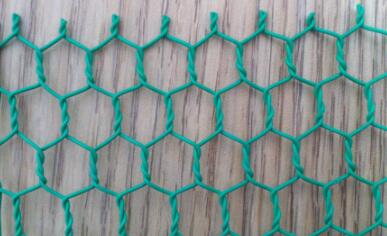Understanding Hexagonal Perforated Sheets Applications and Benefits
Hexagonal perforated sheets are innovative materials that have gained significant popularity across various industries due to their unique design and versatility. Characterized by a series of hexagon-shaped holes, these sheets offer a combination of aesthetic appeal and functional benefits. In this article, we will explore the properties, applications, and advantages of hexagonal perforated sheets, shedding light on why they are a preferred choice for architects, designers, and engineers.
What are Hexagonal Perforated Sheets?
Hexagonal perforated sheets are flat panels made from materials such as metal, plastic, or composite, featuring a pattern of hexagon-shaped perforations. The design not only enhances airflow and light transmission but also provides structural integrity. The size and spacing of the hexagonal holes can be customized, allowing for a range of designs to suit specific needs.
Properties of Hexagonal Perforated Sheets
1. Lightweight Despite their sturdy construction, hexagonal perforated sheets are lightweight, making them easy to handle and install. This characteristic is particularly beneficial in construction and manufacturing, where reducing material weight can lead to significant cost savings.
2. Strength and Durability Made from robust materials like stainless steel or aluminum, these sheets are resistant to wear and tear, corrosion, and rust. Their durability ensures a long service life, reducing the need for frequent replacements.
3. Versatility Hexagonal perforated sheets can be manufactured in various thicknesses and finishes, making them suitable for a wide range of applications. They can be used in environments ranging from industrial settings to more aesthetic applications in architecture and design.
4. Aesthetic Appeal The hexagonal pattern offers a modern aesthetic, making these sheets a popular choice for interior and exterior design projects. Their unique appearance can enhance the visual appeal of buildings, fences, and furniture.
Applications of Hexagonal Perforated Sheets
1. Architecture and Construction Hexagonal perforated sheets are commonly used in façade cladding, sunshades, and balustrades. Their ability to filter light while providing ventilation makes them ideal for building envelopes.
hexagonal perforated sheet

2. Industrial Applications In industrial settings, these sheets are used for machine guards, conveyors, and sound dampening. The perforations allow for airflow and temperature regulation, which is crucial in maintaining equipment efficiency.
3. Decorative Elements Designers incorporate hexagonal perforated sheets into furniture, lamps, and partitions, creating eye-catching features that blend functionality with style. These sheets can be used to create intricate patterns that add character to interior spaces.
4. Filtration and Screening Due to their customized hole sizes, hexagonal perforated sheets are often employed in filtration systems, screen panels, and barbecue grills, enabling effective separation of materials based on size.
5. Acoustic Solutions The sound-absorbing properties of hexagonal perforated sheets make them a favorite in acoustic panels and barriers, contributing to improved sound quality in environments like auditoriums and conference rooms.
Advantages of Using Hexagonal Perforated Sheets
1. Enhanced Airflow The design of hexagonal perforated sheets promotes excellent airflow, making them ideal for ventilation applications. This is crucial in preventing overheating in machinery and improving air circulation in buildings.
2. Customization With the ability to customize hole sizes and sheet dimensions, hexagonal perforated sheets can be tailored to fit specific needs, providing flexibility in design and application.
3. Eco-Friendly Option Many manufacturers produce hexagonal perforated sheets using recyclable materials. This makes them an environmentally friendly choice for sustainable building and design projects.
4. Cost-Effective Their durability and low maintenance requirements translate to long-term cost savings. Investing in hexagonal perforated sheets can be more economical than other materials that may require frequent repairs or replacements.
Conclusion
Hexagonal perforated sheets are a remarkable solution for a wide array of applications, combining aesthetic appeal with functionality. From architecture and design to industrial uses, their unique properties make them an essential material for modern projects. As industries continue to evolve, the demand for versatile, durable, and visually appealing materials like hexagonal perforated sheets is likely to grow, shaping the future of design and construction. Whether for practical applications or artistic endeavors, these sheets represent a blend of innovation and tradition, providing both beauty and utility in every setting.

















